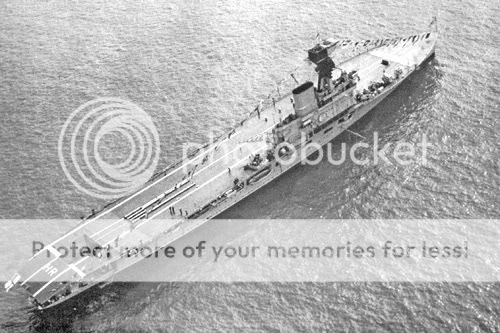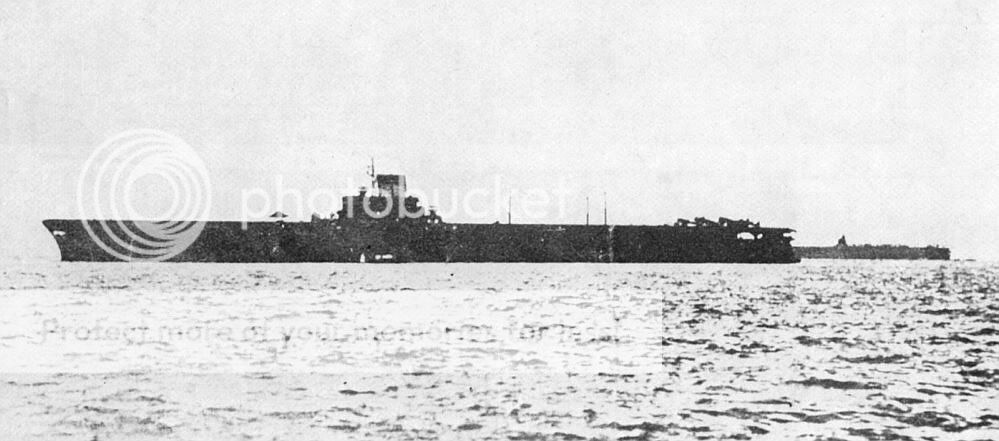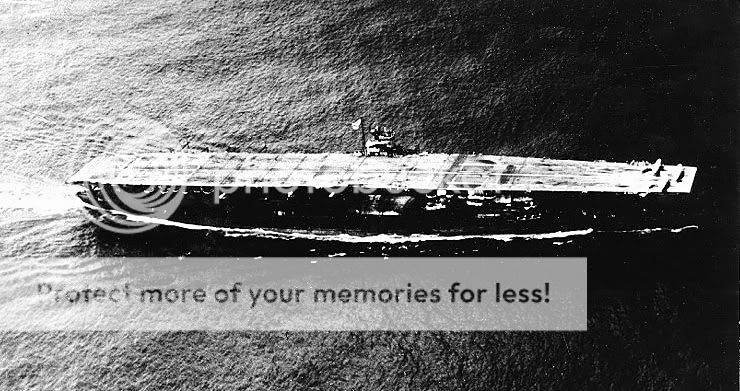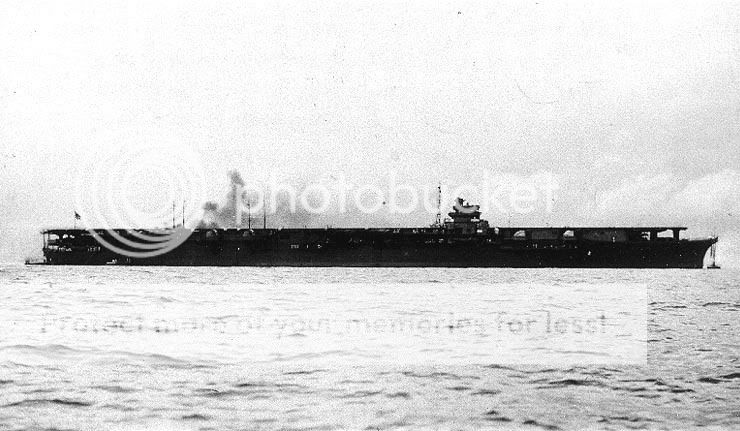Well, I always saw the Hood and the Renown as physically very similar... I have the game Fighting Steel and the Renown is pretty much the hood without one turret aft
I forgot to mention that Renown-class only had 6 15-inch guns, not 8 like HMS Hood did.
Fighting Steel? Have to look it up.
Take a look at the CV behind the Yamato... The flight deck strikes me as very British like... Blended with the hull, unlike the Soryu and company, with the flight deck separated quite notably from the hull
The One on the background? It reminds me very much of the HMS Hermes, which was a british cruiser converted into a carrier.
Uh, this ship:

I'll see if I can get a pic
Thanks.




